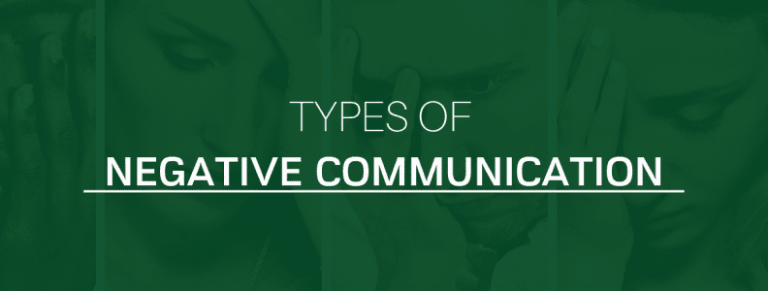Happiness Body Language
Does your body language have the power to make you happy? Well, it turns out that there is a strong connection between your body language and your happiness. In fact, certain body language cues can actually boost your mood and increase your overall sense of well-being. So, if you’re looking for simple and effective ways to feel happier, pay attention to your body language. In this article, we’ll explore the fascinating world of happiness body language and how it can positively impact your life.
Have you ever noticed how your posture and facial expressions can affect how you feel? When you stand tall with your shoulders back and a smile on your face, you instantly feel more confident and positive. This is because your body language sends signals to your brain, influencing your emotions and mindset. Happiness body language involves adopting positive and open gestures, such as a relaxed posture, genuine smile, and friendly eye contact. By consciously using these body language cues, you can enhance your happiness levels and radiate positivity to those around you.
But why does happiness body language work? Well, it’s all about the mind-body connection. When you adopt open and positive body language, your brain releases feel-good hormones like serotonin and endorphins. These hormones not only improve your mood but also boost your confidence and reduce stress. Additionally, happiness body language can improve your relationships by making you more approachable and likeable. So, if you want to feel happier and make a positive impression on others, start paying attention to your body language and unlock the power of happiness.

The Power of Happiness Body Language
Happiness is a universal desire that transcends cultures, languages, and backgrounds. It is a state of being that we all strive for, and interestingly, our body language plays a significant role in expressing and evoking happiness. From the way we stand to the way we smile, our non-verbal cues can have a profound impact on how we perceive ourselves and how others perceive us. In this article, we will delve into the fascinating world of happiness body language and explore its effects on our well-being and relationships.
The Genuine Smile: A Window into Happiness
One of the most recognizable signs of happiness is a genuine smile. When we are genuinely happy, our smiles reach our eyes, creating crow’s feet at the corners and giving our faces a radiant glow. Genuine smiles, also known as Duchenne smiles, are contagious and have the power to uplift not only our spirits but also the moods of those around us. Research has shown that when we smile, even if we don’t feel happy in that moment, our brains release feel-good chemicals that can boost our mood and reduce stress.
An authentic smile is not only a reflection of happiness but also a powerful tool to inspire positive connections and build relationships. When we smile at others, it signals that we are approachable, friendly, and trustworthy. It fosters warmth and creates an inviting environment for meaningful interactions. So, the next time you want to spread a little happiness, don’t forget to flash your pearly whites!
Open and Inclusive Posture: Inviting Happiness In
Our body language goes beyond our facial expressions; it extends to the way we hold ourselves. An open and inclusive posture not only exudes confidence but also invites happiness into our lives. When we stand tall with our shoulders back, we project an aura of self-assuredness and positivity. This open posture makes us more accessible and approachable, fostering connections and signaling to others that we are open to new experiences and opportunities.
On the contrary, closed and defensive postures can hinder the flow of happiness. Crossing our arms, hunching our shoulders, or avoiding eye contact can create barriers and send signals of disinterest or discomfort. By consciously adopting an open posture, we can tap into the power of body language to attract positivity, embrace joy, and create a more fulfilling life.
The Power of Mirroring: Spreading Happiness
Have you ever noticed that when you’re around someone who is happy and enthusiastic, their energy is contagious? This phenomenon can be attributed to a subconscious mirroring effect that occurs in human interactions. Our brains are wired to empathize and pick up on the emotional cues of those around us, leading to a phenomenon called emotional contagion.
When we witness someone displaying happiness body language, such as animated gestures, a genuine smile, or an open posture, our mirror neurons fire, causing us to mimic these behaviors on a subconscious level. This mirroring effect fosters a sense of connection and empathy, allowing happiness to spread like a ripple effect. By consciously embodying positive body language, we have the power to uplift not only ourselves but also those in our presence, creating a domino effect of happiness.
The Science Behind Happiness Body Language
Boosting Happiness: The Mind-Body Connection
The relationship between body language and happiness goes beyond mere appearances; it is rooted in the mind-body connection. Numerous scientific studies have showcased the profound impact that body language can have on our mental well-being. When we adopt positive body language, such as smiling, standing tall, and making eye contact, our brains receive positive feedback, triggering the release of endorphins and other feel-good neurotransmitters.
Furthermore, research has shown that the way we hold our bodies can influence our emotions. Studies conducted by social psychologist Amy Cuddy have revealed that adopting confident and expansive postures can actually increase testosterone levels and decrease cortisol (the stress hormone) levels in our bodies. This not only boosts our self-confidence but also enhances our overall sense of well-being and happiness.
So, the next time you’re feeling down, remember that your body has the power to influence your mind. By consciously adopting positive body language, you can kick-start a cycle of happiness and well-being.
Happiness Body Language in Daily Life
Now that we understand the impact of happiness body language, let’s explore some practical ways to incorporate it into our daily lives:
- Start your day with a smile: Set the tone for a happy day by greeting yourself in the mirror with a big smile.
- Power poses: Taking a few minutes each day to strike confident and expansive poses can boost your mood and confidence.
- Mirror others’ positive body language: Pay attention to the gestures, postures, and expressions of happy and confident individuals, and incorporate them into your own interactions.
- Practice open and inclusive postures: Make a conscious effort to stand tall, keep your shoulders relaxed, and maintain eye contact when engaging with others.
- Spread joy through your actions: Actively engage in acts of kindness and spread positivity to create a ripple effect of happiness.
By incorporating these practices into our daily routines, we can harness the power of happiness body language to not only enhance our own well-being but also uplift the spirits of those around us. So, go ahead, wear your happiness on your sleeve, and let your body language speak volumes!
The Impact of Happiness Body Language on Relationships
Building Strong Connections through Non-Verbal Cues
In our relationships, both personal and professional, our body language plays a crucial role in forming impressions, building trust, and fostering meaningful connections. When we display happiness body language, we create an environment that invites positive interactions and deepens our relationships.
Positive body language can strengthen relationships by conveying warmth, openness, and acceptance. By exhibiting active listening skills through attentive eye contact, nodding, and open postures, we signal our interest and engage in meaningful conversations. This makes the other person feel valued and appreciated, promoting a sense of connection.
In romantic relationships, happiness body language can enhance intimacy and deepen emotional bonds. Simple gestures like holding hands, hugging, and maintaining eye contact can communicate love, trust, and affection. It is essential to consistently display positive body language to nurture and sustain healthy relationships.
Cultivating Emotional Intelligence through Body Language
Emotional intelligence, the ability to understand and manage our emotions, as well as perceive and empathize with the emotions of others, plays a vital role in successful relationships. Body language serves as a powerful tool in developing and honing our emotional intelligence skills.
By observing and interpreting the body language of others, we can gain valuable insights into their emotional state and respond empathetically. For example, if a loved one is displaying closed-off body language and seems distant, we can approach them with understanding and empathy, creating a safe space for them to open up and share their feelings.
Conversely, by being aware of our own body language, we can regulate our emotions and communicate effectively. If we are feeling anxious or upset, taking a deep breath, adopting an open posture, and smiling can help us calm down and convey a sense of calm to those around us.
Happiness Body Language and Success
Confidence: The Key to Success
Confidence is often a crucial ingredient for success in various areas of life, including personal relationships, career growth, and public speaking. Happiness body language plays a significant role in exuding confidence and influencing how others perceive us.
When we display confident body language, such as maintaining eye contact, speaking clearly and assertively, and using open gestures, we project an image of competence and self-assurance. This enhances our credibility and inspires trust in others.
Confidence also has a circular effect; when we exude confidence through our body language, our minds perceive ourselves as capable and competent, further boosting our confidence levels.
The Power of Positive Visualization
Visualizing success is a powerful tool for achieving our goals, and body language can enhance the effectiveness of this technique. By adopting the body language associated with success and happiness, we can reinforce our belief in our abilities and create a positive mental image of achieving our goals.
Whether it’s before a job interview, a presentation, or a performance, taking a moment to strike a confident pose and visualize success can boost our confidence, reduce anxiety, and positively impact our performance.
Remember, the mind and body are interconnected, and by leveraging happiness body language, we can enhance our chances of success and create a positive trajectory in our lives.
The Power of Happiness Body Language: A Key to Well-Being and Success
Embracing a Positive Mindset through Body Language
Happiness body language is a powerful tool that allows us to embrace a positive mindset and manifest happiness in our lives. By consciously adopting positive body language, we can influence our mood, build stronger connections, and enhance our chances of success.
It is important to remember that happiness body language is not about putting on a façade or pretending to be happy when we are not. It is about harnessing the power of our non-verbal cues to express and evoke genuine joy.
So, the next time you find yourself feeling down or wanting to cultivate more happiness in your life, remember the transformative power of your body language. Stand tall, smile authentically, and radiate positivity. Embrace the power of happiness body language, and watch as it brings about positive transformations in every aspect of your life.
Key Takeaways: Happiness Body Language
- Happiness can be expressed through body language.
- Smiling is a universal sign of happiness.
- Open and relaxed body posture can indicate happiness.
- Eye contact and nodding show engagement and contentment.
- Positive gestures, like a thumbs-up, demonstrate happiness.
Frequently Asked Questions
Welcome to our FAQ section on happiness body language! Here, we answer some common queries about how body language can contribute to our happiness and well-being. Read on to learn more about this fascinating topic.
1. How does body language affect our happiness?
Body language plays a significant role in influencing our emotions and overall happiness. When we adopt positive postures, such as standing tall, making eye contact, and smiling, our brain releases endorphins, which are feel-good chemicals that promote happiness. In contrast, closed-off and negative postures, like slouching and crossing our arms, can contribute to negative feelings or low energy levels. By paying attention to our body language and consciously adopting positive postures, we can boost our happiness levels.
Furthermore, body language also impacts how others perceive us, which in turn affects our social interactions and relationships. When we display open and friendly body language, such as maintaining eye contact and using open gestures, people are more likely to respond positively, leading to more satisfying social connections and increased happiness.
2. Can body language help improve our mood?
Yes, body language can indeed help improve our mood. Studies have shown that adopting certain postures and movements associated with happiness, such as standing with an upright posture, walking confidently, and engaging in expressive facial expressions, can have a positive impact on our mood. These actions send signals to our brain, triggering the release of neurotransmitters, like dopamine and serotonin, that are associated with happiness and well-being.
Moreover, when we intentionally mimic the body language of happy and positive people, we tend to experience a positive emotional contagion. This means that by imitating the body language of someone who is genuinely happy, we can “catch” their positive emotions, leading to improvements in our own mood.
3. What are some body language indicators of happiness?
There are several body language indicators that can reveal if someone is feeling happy and content. Some common signs include a genuine and warm smile, relaxed facial muscles, bright and lively eyes, an upright posture, an open and uncrossed body position, and engaging gestures. These nonverbal cues can convey happiness and make a person appear approachable and friendly.
In addition to these general indicators, it’s essential to pay attention to specific microexpressions, which are fleeting facial expressions that can provide insight into someone’s true emotions. Happy microexpressions include raised cheeks, crinkling around the eyes, and a slight upward curve of the lips.
4. Can we use body language to project happiness even when we don’t feel it?
Yes, we can use body language to project happiness even when we don’t feel it initially. By consciously adopting positive body language, such as smiling, maintaining good eye contact, and using open and engaging gestures, we can trick our brain into triggering the release of feel-good chemicals associated with happiness. Over time, our brain begins to align our emotional state with our outward expression, leading to a genuine sense of happiness.
This practice is often referred to as “fake it till you make it,” where we intentionally display positive body language until it becomes natural and authentic. It’s important to note that this doesn’t mean suppressing or ignoring negative emotions, but rather using body language as a tool to influence our emotional state and overall well-being.
5. Can practicing positive body language have long-term effects on happiness?
Absolutely! Practicing positive body language can have long-term effects on our happiness and overall well-being. When we consistently adopt positive postures and movements associated with happiness, our brain rewires itself, forming new neural connections that are aligned with positive emotions and experiences. This leads to a shift in our overall mindset, making happiness a more natural state for us.
Moreover, embodying positive body language promotes a virtuous cycle. When we display openness, warmth, and positivity through our body language, we elicit positive responses from others, creating a supportive and uplifting social environment. This, in turn, further enhances our happiness levels, as we benefit from meaningful connections and positive interactions.
The 3 BEST Body Language Signs For Making Friends
Summary
Smiling and using open body language can help make us feel happier and more confident. When we stand up straight, make eye contact, and use positive gestures, we send signals to our brain that boost our mood and self-esteem. On the other hand, crossing our arms, frowning, or avoiding eye contact can make us feel more negative and closed off. So, next time you want to feel happier, try using positive body language!
When we mirror the body language of others, such as smiling when they smile, it can create a positive connection and make both parties feel happier. Additionally, our body language can impact how others perceive us, shaping their impressions of our confidence and approachability. By being aware of our own body language and making small adjustments, we can improve our overall happiness and have more positive interactions with others. So, let’s stand tall, smile, and use positive body language to bring more happiness into our lives!

